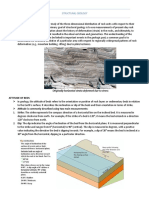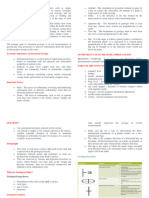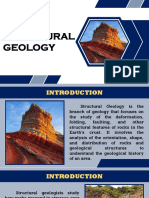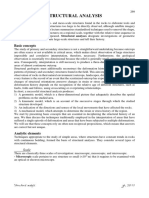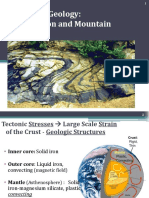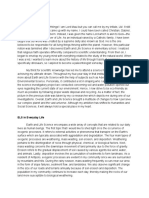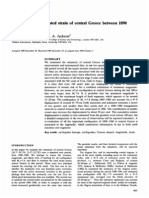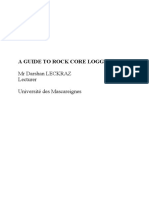0% found this document useful (0 votes)
15 views8 pagesGeoe Reporting Script Revised
Group 1 presents foundational concepts in structural geology, focusing on the altitude of beds, outcrops, and geological maps, which are essential for real-world applications in engineering geology. The altitude of beds involves understanding rock layer orientation through measurements of strike and dip, while outcrops reveal geological formations exposed by erosion. Geological maps visually represent rock distribution and characteristics, aiding in geological understanding and resource management.
Uploaded by
carl12viernesCopyright
© © All Rights Reserved
We take content rights seriously. If you suspect this is your content, claim it here.
Available Formats
Download as PDF, TXT or read online on Scribd
0% found this document useful (0 votes)
15 views8 pagesGeoe Reporting Script Revised
Group 1 presents foundational concepts in structural geology, focusing on the altitude of beds, outcrops, and geological maps, which are essential for real-world applications in engineering geology. The altitude of beds involves understanding rock layer orientation through measurements of strike and dip, while outcrops reveal geological formations exposed by erosion. Geological maps visually represent rock distribution and characteristics, aiding in geological understanding and resource management.
Uploaded by
carl12viernesCopyright
© © All Rights Reserved
We take content rights seriously. If you suspect this is your content, claim it here.
Available Formats
Download as PDF, TXT or read online on Scribd
/ 8






